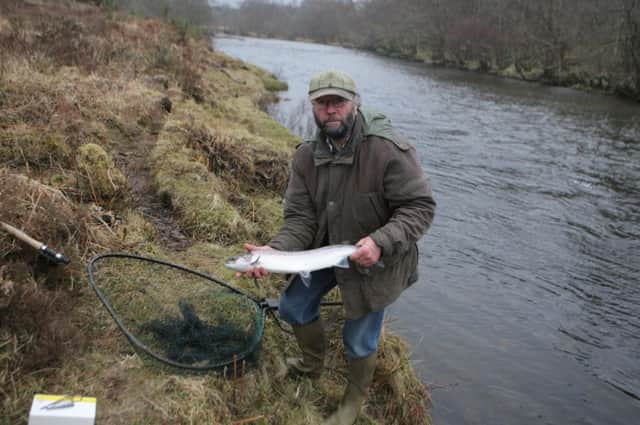‘Fish IVF’ causes rise in Highland river salmon


The River Carron in Wester Ross has gone from hardly any returning fish being caught by anglers to more than 300 a year.
Bob Kindness, manager of the River Carron Restoration project, has used an unorthodox “stocking programme” to turn around the river’s fortunes in the face of scientific consensus.
Advertisement
Hide AdAdvertisement
Hide AdFor nearly 20 years, Mr Kindness, a lecturer at Inverness College, has been running a project to boost salmon numbers using controlled fertilisation and restocking.
The process has been dubbed by some, incorrectly he says, as “IVF for salmon”.
Despite the Carron’s success, wild salmon numbers across Scotland are at their lowest level for a decade, with catches in some areas down by 50 per cent.
The situation is so bad that SNP ministers in Holyrood have just announced a plan to ban anglers taking salmon from Scottish rivers under a “licence to kill” scheme.
Mr Kindness said: “Last year’s wild salmon figures were grim reading for conservationists and anglers. Luckily, it seems things are different here.”
Mr Kindness’s operation is based at a site with 16 large tanks and several pools near the village of Strathcarron. At the site, Mr Kindness breeds female salmon from wild eggs taken from fish he has caught on the Carron, later “stripping” them of their eggs to spawn a unique generation of new fish, which he allows to grow in captivity before releasing them.
“The conventional logic is that you need to restore the habitat for salmon to flourish,” said Mr Kindness. “But this river has been pristine for generations – that wasn’t the problem here.”
Instead, he points to the effects of climate change, which led to deluges of rain in the late 1990s, causing spates that washed away young fish and the gravel needed for breeding. Also to blame, he says, is “the rise of predation” – seal numbers have soared off the Scottish coast and salmon-eating merganser ducks have gained environmental protection.
Advertisement
Hide AdAdvertisement
Hide AdMr Kindness said: “Our problem was that we didn’t have young fish in the river. The pressures from predation and the changing weather patterns made it difficult for them to survive.
“Mother nature wasn’t going to bring them back, so we had to step in to create them.”
In 2001, Mr Kindness received research funding and equipment, some from nearby fish farms, to create a “captive breed stock from wild eggs”.
He claims his success rate is far better than in nature, meaning that, last year, he was able to release 330,000 young fish into the river. Since his project started, catches by anglers on the river have gone from a handful a year to an annual average of 300 today.
The Loch Carron area is an important one for the fish farming industry, which critics blame for the rise of sea lice and the general decline in wild salmon numbers.
Mr Kindness says that he is a supporter of the industry, but that his long-term trial seems to show that wild salmon and farmed salmon “can both thrive on the same river”.
This has not stopped conservationists dubbing him “Mr Killing Them With Kindness” for allegedly playing god with the genetic make-up of the region’s wild salmon.
Don Staniford, from the Global Alliance Against Industrial Aquaculture, said: “The scientific evidence from around the world is crystal clear: hatcheries harm wild salmon.
Advertisement
Hide AdAdvertisement
Hide Ad“Hatchery-reared salmon, like farmed salmon, can spread genetic pollution and precipitate an extinction vortex in wild salmon.”
FOLLOW US
SCOTSMAN TABLET AND MOBILE APPS